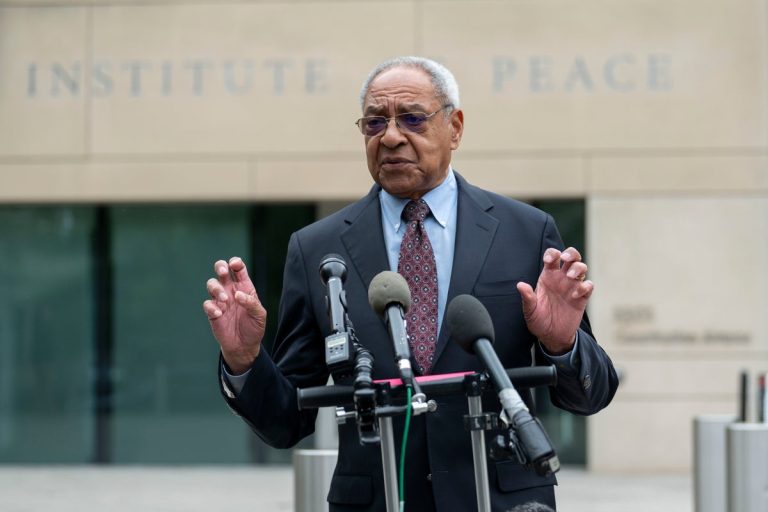Your support helps us to tell the story
From reproductive rights to climate change to Big Tech, The Independent is on the ground when the story is developing. Whether it’s investigating the financials of Elon Musk’s pro-Trump PAC or producing our latest documentary, ‘The A Word’, which shines a light on the American women fighting for reproductive rights, we know how important it is to parse out the facts from the messaging.
At such a critical moment in US history, we need reporters on the ground. Your donation allows us to keep sending journalists to speak to both sides of the story.
The Independent is trusted by Americans across the entire political spectrum. And unlike many other quality news outlets, we choose not to lock Americans out of our reporting and analysis with paywalls. We believe quality journalism should be available to everyone, paid for by those who can afford it.
Your support makes all the difference.
Read more
The U.S. Institute of Peace retook control of its headquarters Wednesday, two days after a federal judge said the firing of its board and employees by Elon Musk’s Department of Government Efficiency was illegal.
The institute’s acting president, George Moose, entered the organization’s headquarters with private security and the institute’s outside attorney for the first time since being escorted off the premises during the DOGE takeover. Moose and most of the institute’s board were fired in March, part of the mass slashing of the federal workforce spearheaded by Musk.
The institute and many of its board members filed a lawsuit against the Trump administration soon after, seeking to prevent their removal and stop DOGE from taking over its operations. U.S. District Court Judge Beryl A. Howell’s opinion on Monday reversed DOGE’s actions.
Speaking after a short examination of the headquarters, Moose said all appeared to be in order.
“We just did a quick walk-through — externally, visibly, things look to be in pretty good shape,” he said. “I didn’t see anything, any destruction, if you will, no damage that I can see that is visible.”
Moose, a former ambassador and career member of the U.S. Foreign Service, said a team of employees from human resources, technology and finance would be in the building Thursday getting the nonprofit ready to welcome back its workforce. He expected to bring back all the staff who want to return.
The White House did not immediately return a request for comment. The administration has 30 days after Monday’s ruling to file a notice of appeal.
Agencies across the federal government have been slashed or dismantled by Musk’s DOGE team. Wednesday’s low-key scene at the institute’s headquarters marked a rare moment when a DOGE-targeted agency or organization has been able to begin reestablishing itself.
The judge’s ruling said the Trump administration did not have authority to unilaterally dismantle the institute, which was established by Congress in 1984 as an independent organization that would promote peace and seek to end conflicts around the world. It was operating in more than two dozen conflict zones at the time Musk’s team took it over and shut it down.
The saga began when Trump issued an executive order in February that targeted the institute and three other agencies for closure in an effort to deliver on campaign promises to shrink the size of the government. The first attempt by DOGE to take over the headquarters led to a standoff. Members of Musk’s DOGE group returned days later with the FBI and District of Columbia Metropolitan Police to help them gain entry.
DOGE installed new leadership, ordered a mass firing of nearly all the staff through their private emails, and handed over the institute’s headquarters to the General Services Administration.
The institute, concerned about liability and security of the building in the aftermath of the judge’s ruling, reached out to the government attorneys earlier this week and again on Wednesday. George Foote, the institute’s outside attorney, said the exchange was very smooth and orderly.
Moose said the goal now is to get back to the work the institute was created to do 40 years ago and “projects, ideas that are, we believe, of interest to the American people.”
___

